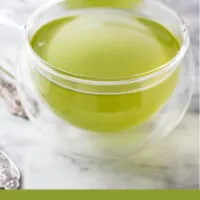Green tea has amazing health benefits but is often associated with bitterness. However, if brewed correctly, it shouldn’t have a bitter taste.
This helpful green tea guide includes everything you need to know about How to Make Green Tea Taste Good, including troubleshooting, flavor-enhancing add-ins, latte tips, and even a quick brief on green tea cold brew!
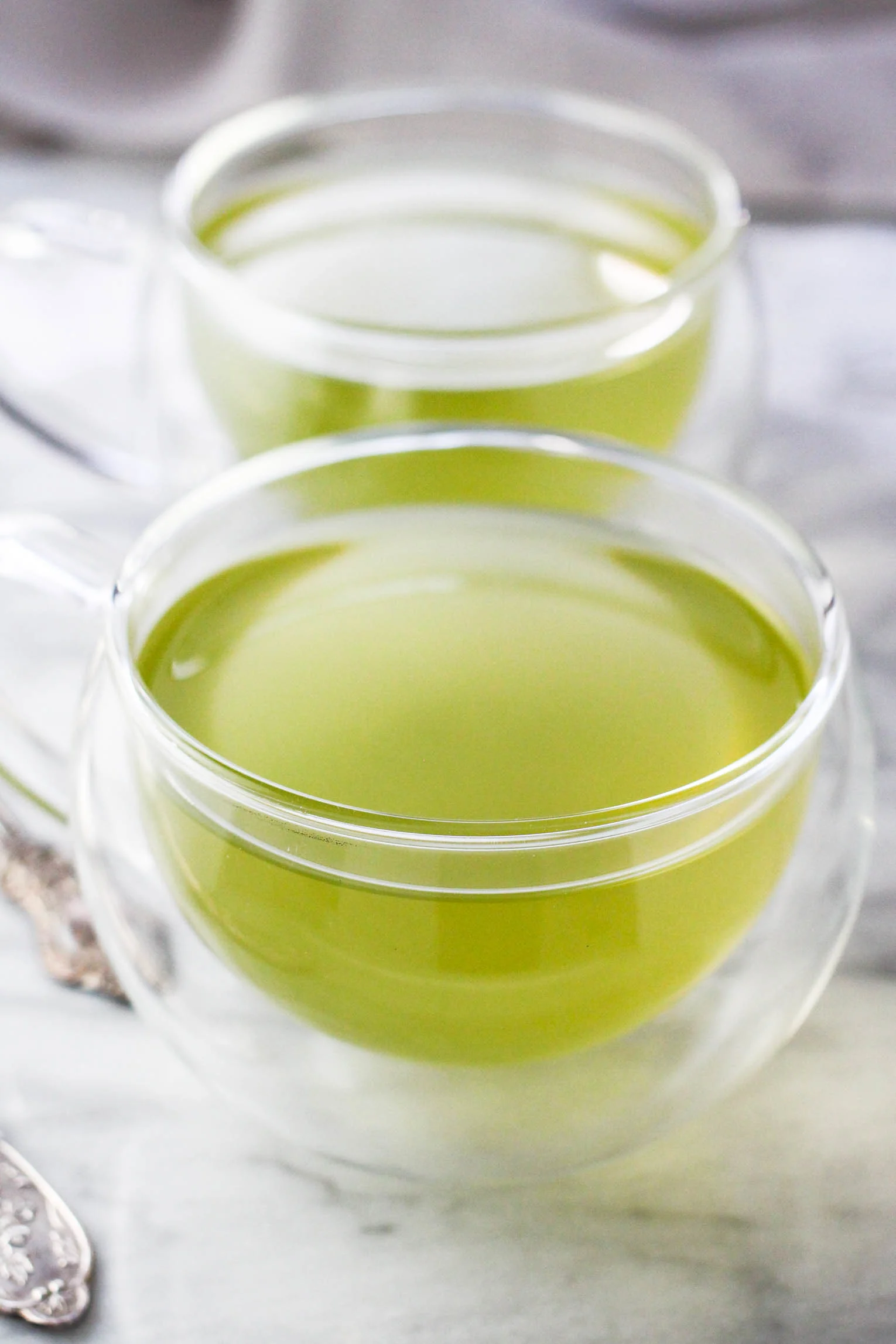
Pure green tea is one of the least processed tea varieties.
For this reason, its natural flavor compounds remain mostly undamaged, allowing the tea’s naturally delicate, earthy, and grassy-sweet aromas to shine.
At the same time, green tea’s unprocessed nature makes it sensitive to heat.
If brewed for too long, for example, it can quickly turn bitter and less palatable.
Fortunately, there are several healthy hacks that you can experiment with to make your green tea taste better.
With some trial and hopefully little error, you’ll ultimately create the perfect cup of green tea customized precisely to your preferences.
So, without further ado, here are all the ways to make your green tea taste good without adding sugar!
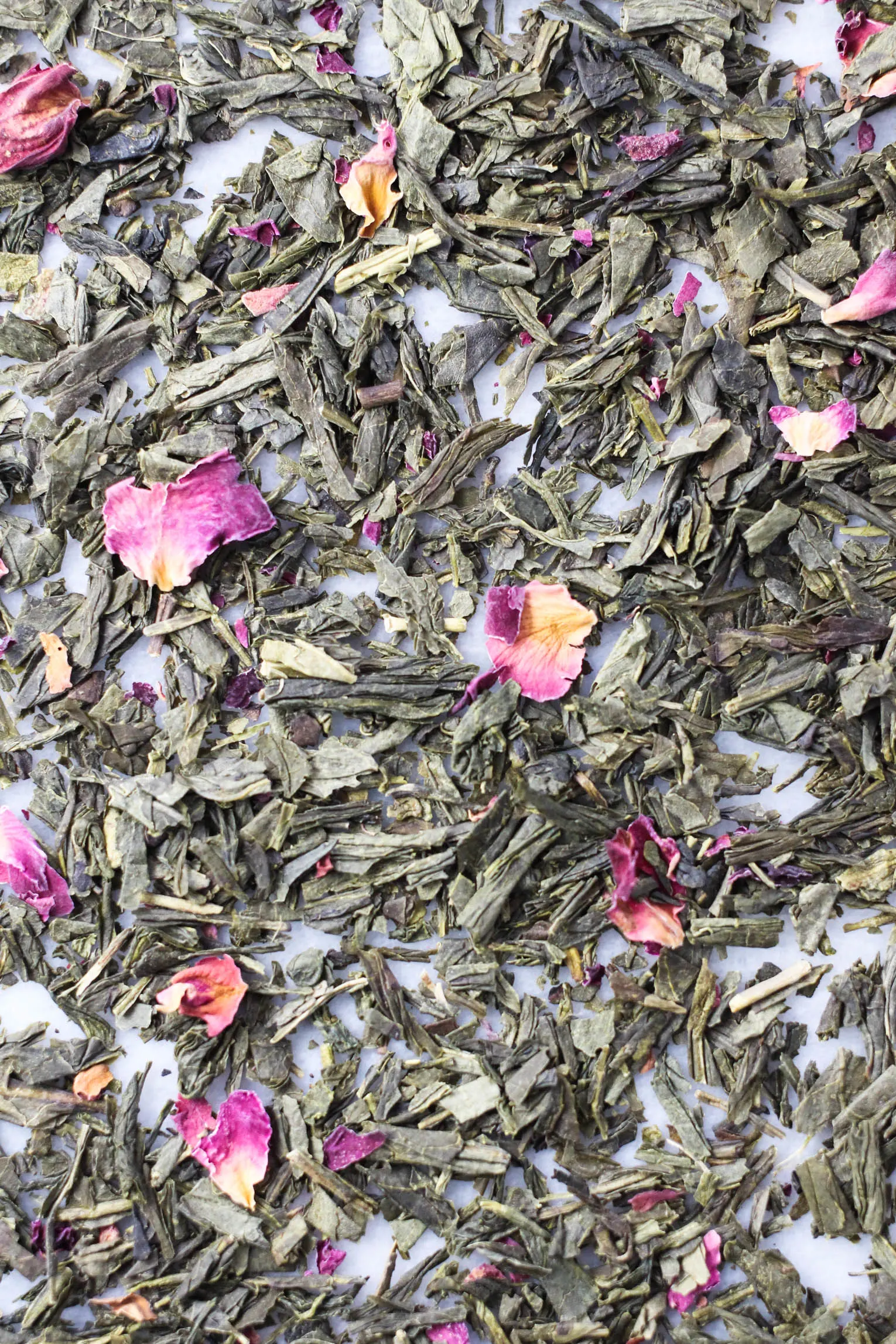
How to Make Green Tea Taste Good Without Adding Anything
When green tea is brewed correctly, the flavor is soft, sweet, and never bitter.
That said, understanding the procedure for properly brewed green tea is essential!
Follow these guidelines, and you may be pleasantly surprised by how good green tea tastes before adding anything extra.
Step One: Buy Better Green Tea.
The leaves in green tea bags are often damaged and broken unevenly, causing an unbalanced flavor.
High-quality, loose-leaf tea is more expensive, but when it comes to consistently smooth green tea, better quality gets you the most bang for your buck.
Try different brands of loose-leaf green tea until you find your favorite!
- Chinese green teas: The tea leaves are often pan-fried to intensify the nutty, toasted flavor. Dragonwell, Pinhead Gunpowder, and Jasmine Pearls are popular varieties.
- Japanese green teas: If you’re after a bold, bright green, and complex umami taste, go with Japanese varieties like Sencha, Gyokuro, and Genmaicha.
- Green tea blends: Shop for green tea blended with natural fruit, floral elements, herbs, nuts, and other herbal teas like lavender, hibiscus, rose, chai, and so on.
- Matcha green tea: Matcha has more caffeine, anti-oxidants, and a stronger but still soothing and sweet flavor. The leaves are ground into a fine powder which is then whisked directly into hot water.
Step Two: Brew the Tea Properly.
Steeping green tea in water that’s too hot, soaking for too long, or not using enough green tea leaves are common mishaps sure to cause an off-putting bitterness.
Here are the rules:
- The water temperature for steeping green tea should be between 140°-180°F. Use a probe thermometer to ensure the water is temped within those parameters. If you don’t have a thermometer, heat the water until tiny bubbles break at the surface before it reaches a boil. You can also buy a tea kettle with temperature settings.
- The ideal steep time for green tea is between 30 seconds and 3 minutes. After the first 30 seconds, give it a taste, and continue steeping until the flavors are solid and smooth. Do not steep longer than 3 minutes. If you’re prone to distraction, set a timer!
- The precise amount of leaves for a full-flavored green tea varies. However, a good starting ratio is 1-2 tablespoons of loose leaves per cup of hot water. The flavor concentrates in smaller leaves, so you won’t need as much. Whereas with large leaves, you may need more.
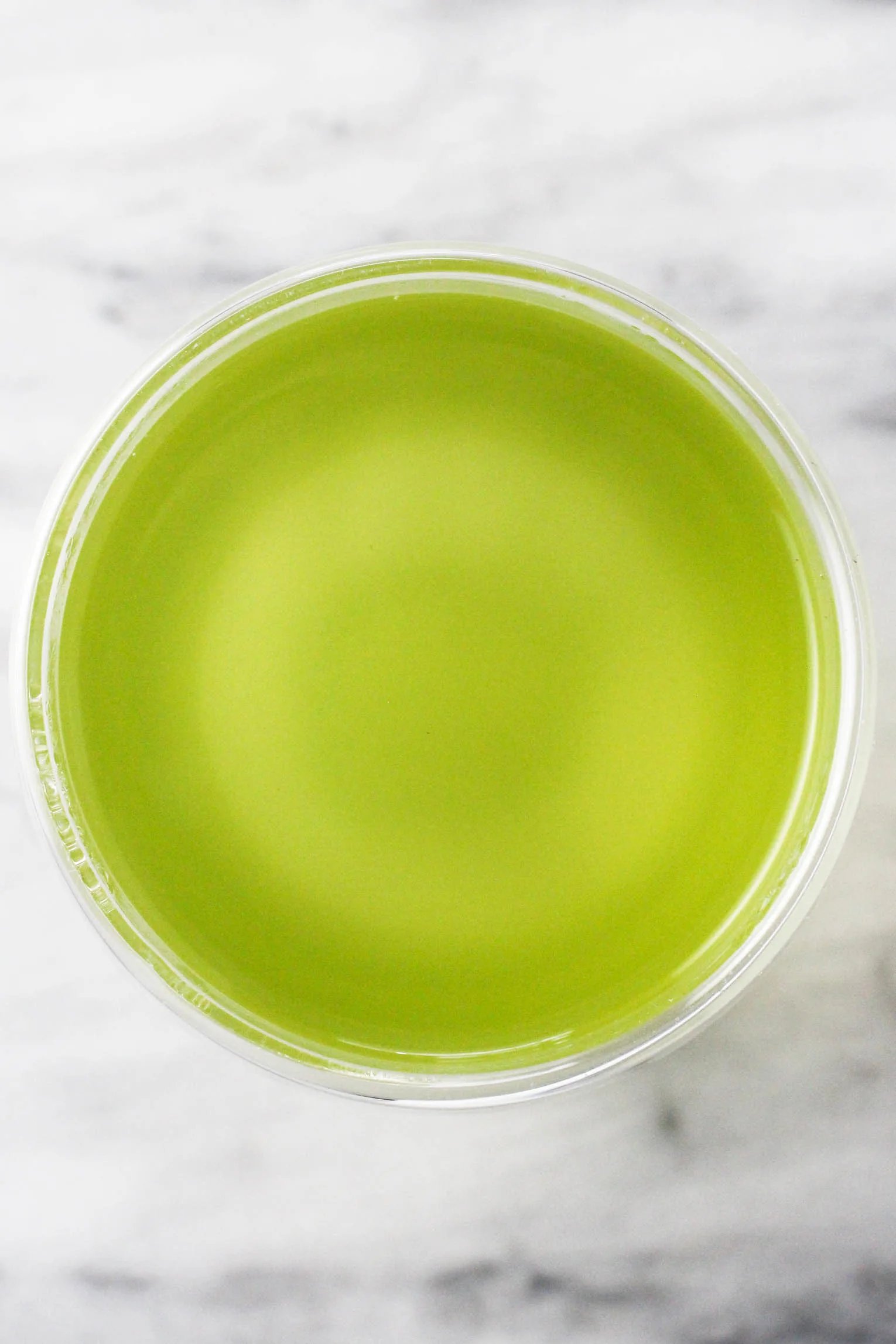
How to Make Green Tea Taste Better with Add-ins
Here are a few other ways to improve the flavor of green tea:
Brew with other types of tea – Steep loose-leaf green tea with other loose tea leaves and herbal tea blends, such as peppermint, rooibos, cranberry, apple, and hibiscus.
Infuse with fresh fruit – Steep tea with the zest of a slice of tart fruit like lemon, lime, grapefruit, orange, or green apple. The citric acidity elevates the earthiness and overpowers any lingering bitter flavor.
Herbs – Try adding different fresh or dried herbs and warming spices to your tea infuser to steep with green tea and add complexity to the final flavor. Try fresh or dried herbs such as rosemary, sage, thyme, mint, Thai, or lemon basil.
Ground spices – Cinnamon, nutmeg, ginger cloves, allspice, mace, cardamom, and star anise bring a cozy warmth that builds on green tea’s vibrant undertones. You can also use dessert blends like pumpkin pie spice, apple pie spice, or warming chai spices. In addition, add a tiny pinch of salt to make everything sweet taste sweeter.
Fruit and berry infusions – You can make green tea taste better with fresh, frozen, or dried fruit. This berry green tea recipe showcases sweet-tart raspberries, but you can follow the instructions using practically any type of fruit or berry.
Honorable mentions – Here are a few more ways to make green tea taste better that come to mind:
- Fresh ginger
- Citrus zest or a portion of the peel
- Pure flavoring extracts
- Food-safe essential oils
- Edible flower petals
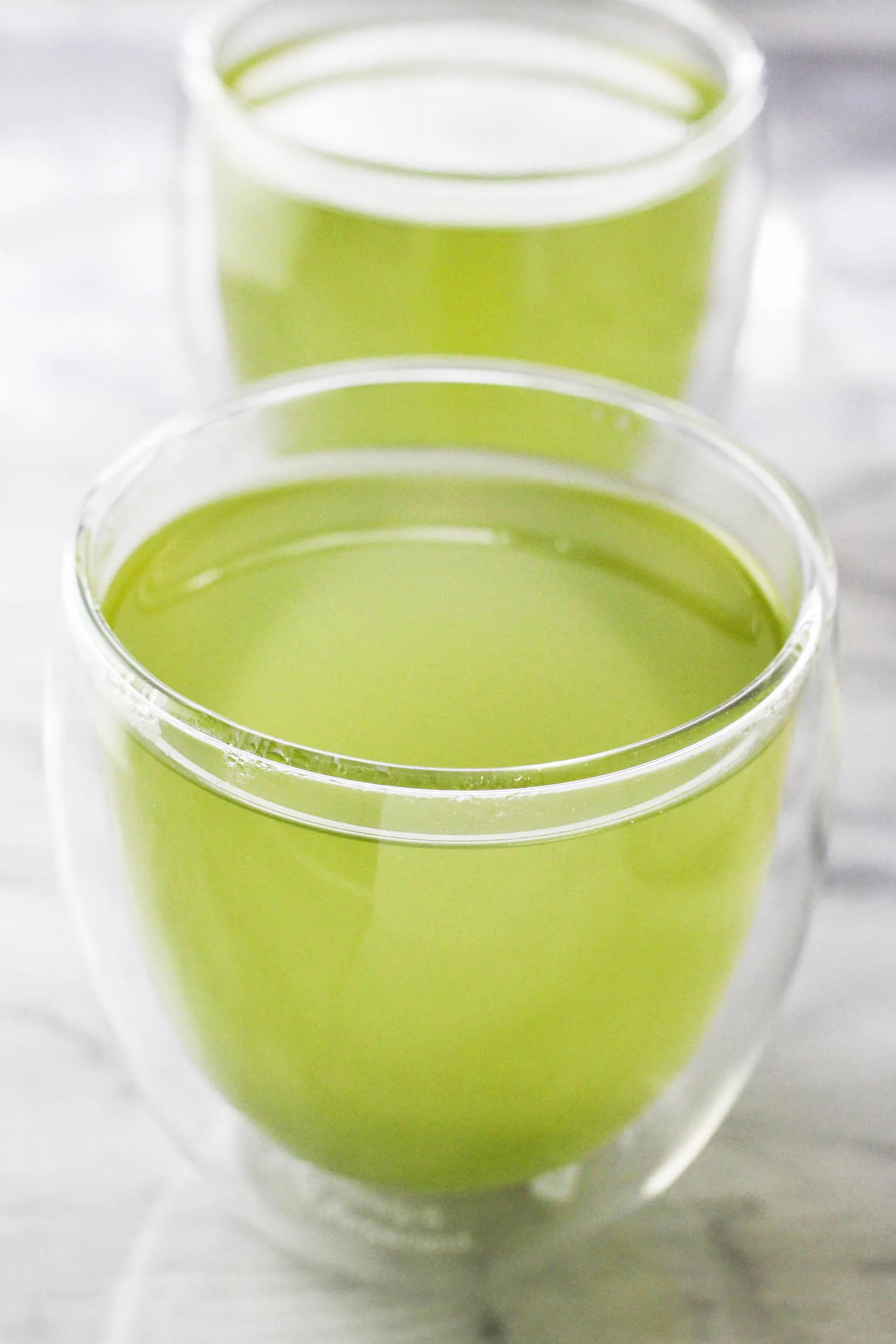
How to Sweeten Green Tea without Sugar
Sweetening green tea with natural sweeteners derived from real food ingredients is always a good idea.
These syrups are less processed and more nutrient-dense than granulated sugar:
- Raw honey has antimicrobial, antioxidant, and anti-inflammatory properties. In addition, it brightens up tea with a sweet, floral, and fruity flavor.
- Pure maple syrup is derived from the sap of maple trees and is rich in antioxidants. In addition, it has a distinguishably sweet, rich, and caramel-like flavor.
- Date syrup is intensely sweet with a vanilla-like flavor. It has twice the potassium, calcium, and magnesium levels of maple syrup or honey.
- Agave nectar comes from the blue agave plant. It’s similar to honey but thinner. It’s also much lower on the GI scale.
- Coconut nectar comes from the sap of coconut palm flowers. It’s very sweet and caramel-like.
Green Tea Latte Recipe
A green tea latte is simply a latte made with brewed green tea instead of espresso.
Matcha lattes are all the rage, but you just as easily can steep a strong cup of good green tea as the base of your latte.
Follow these simple steps:
- Heat 1 cup of water to a low simmer (between 140°-180°F). Pour the hot water into a large mug, submerge your tea infuser, and steep for no more than 3 minutes.
- Remove the infuser, and pour in ½ cup of steamed milk, your choice of natural sweetener, and optional warming spices.
- Use a handheld frother to blend until smooth and creamy. If you don’t have a frother, mix the latte ingredients in a blender until frothy.
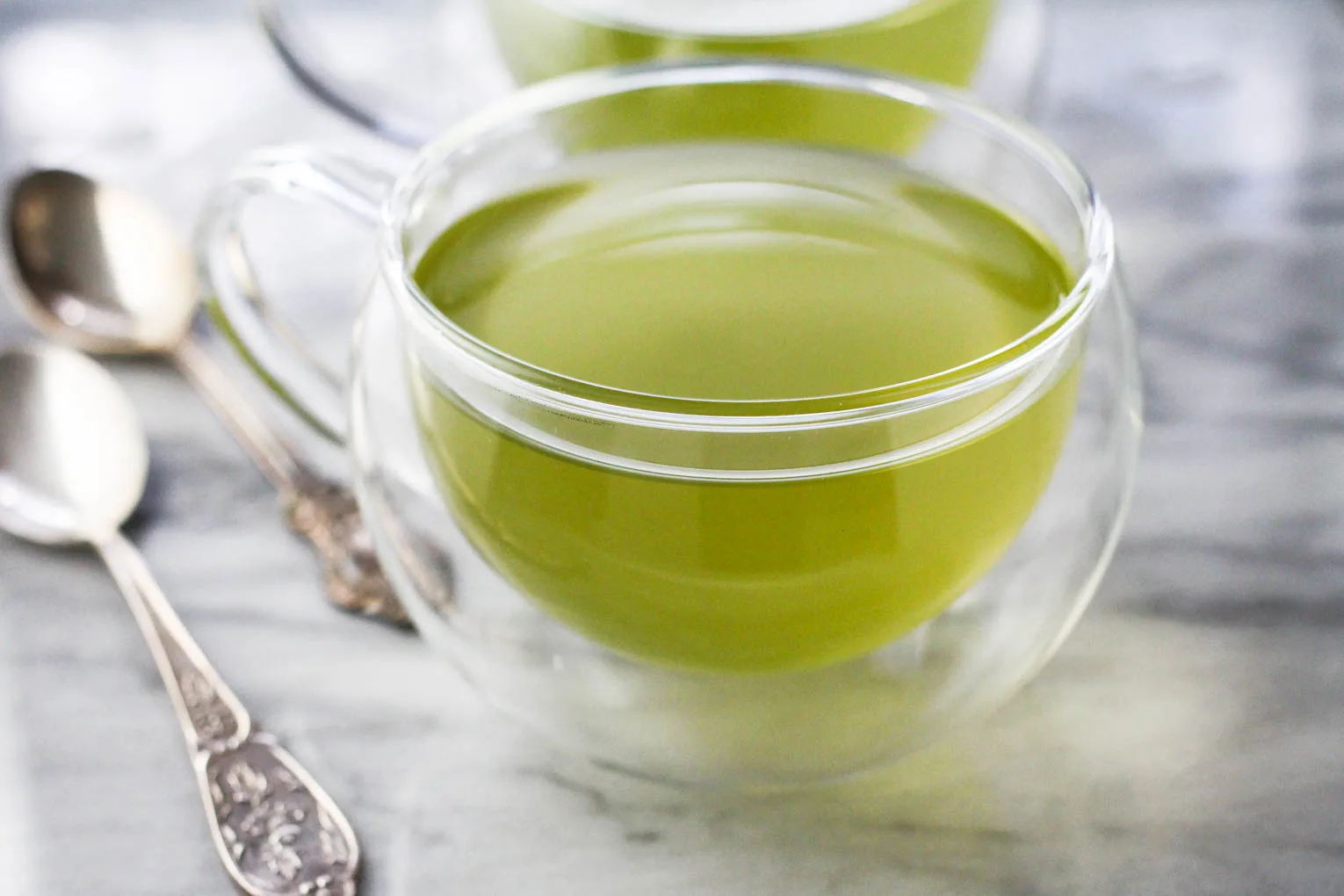
Green Tea Cold Brew
The cold brew method isn’t limited to coffee. Cold-brewing green tea is also an option, and it is practically fail-proof.
To make cold-brew green tea, fill a tea infuser with loose-leaf tea and immerse it in cold water. Refrigerate overnight, and in the morning, it will be ready.
This is an incredibly satisfying thirst quencher on a hot day!
Final Thoughts
With these green tea brewing tips and flavoring-enhancing tricks, you are equipped with an arsenal of methods to cut out the bitterness and make the most of green tea!
Before you head off to put these green tea techniques in motion, I have one last piece of advice:
Green tea tastes best freshly brewed, but if you have extra, don’t toss it!
Instead, let the tea cool to room temperature and then freeze the liquid in an ice cube tray. Transfer the frozen ice cubes to a freezer-safe resealable bag and keep them in the freezer to make iced green teas, iced cold brews, and iced lattes without watering down your green tea drink. Brilliant!
